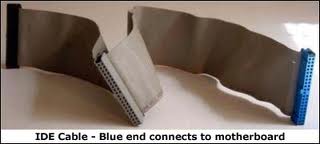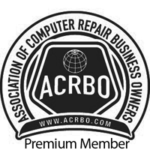Hello everyone,
I see it all of the time. A clients hard drive will no longer boot up into the Operating System and panic sets in! When I go to their home the first question to me is always the same: Can you save my data?
Usually I can. Even though a hard drive will not load the Operating System, I can usually access the data on the drive in one of two ways. I explained the first method that I use in this previous post (I prefer this method in a sense because I don’t have to remove the defective hard drive from the machine).
My second method is explained here:
1) Remove the failed hard drive from the machine and hook it up to a known good working machine (two ways to do this)
A) Open the good computer and install the failed hard drive inside. If the drives are IDE drives, one must be set up as the “master” drive and one must be set up as the “slave” drive (both drives will be on the same cable). If the drives are SATA drives, you don’t have to mess with the master/slave setup (each SATA drive will have a separate cable) Once both drives are connected you will be able to see the files from the failed hard drive and it is easy to copy them over to the good drive.
The advantage of connecting two drives straight to the motherboard is speed. IDE to IDE or SATA to SATA is faster than IDE or SATA to USB (explained in step “B” next).
B) Externally connect the failed hard drive to the good computer via USB. I use a USB 2.0 to IDE or SATA Drive Adapter to do this. Windows will find the new hardware (the old failed drive), and install the appropriate drivers. The failed drive will now show up (with a drive letter) in My Computer/Windows Explorer, and you will be able to see and access all files for transfer. File transfer speed will be a bit slower than step “A” above, but the overall setup is much easier and the results are just as effective!
How cool is that?
Professor Randy says: Recover your clients data from a defective hard drive and they will love you forever! The above method which involves connecting the failed hard drive to a known good working machine makes the recovery process a snap!



